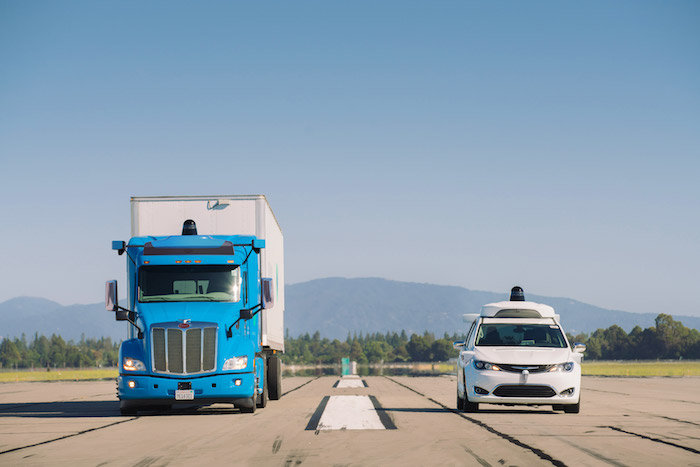Despite the fact that autonomous vehicles are still in their prototyping phase, 2018 saw a long string of autonomous vehicle-related advancements, new sensing technologies, and even scandals. Here's a look back at last year and a hint of what may be coming in 2019 for self-driving cars.
2018 had many major news stories on autonomous vehicles. What trends emerged over the last year and what can we look forward to in the coming months?
Take a jaunt down memory lane to revisit some highlights on the sensor systems, hardware, and challenges related to autonomous transport technology.
The Promise of Accessible Mobility
With a technology as challenging to develop as autonomous vehicles, the rewards of R&D must be steep. Some in the industry have promised sweeping improvements to road safety if we let machines take the wheel. But beyond the hope of reducing traffic collision-related fatalities, some also think that autonomous vehicles will also provide opportunities for democratization of mobility.
CES kicked off 2018 in January, where Toyota's President Akio Toyoda announced the concept of the e-Palette customizable autonomous vehicle, a hybrid transportation and mobile storefront that Toyota presented as a viable future for smart cities.

Mr. Toyoda takes a selfie with the CES 2018 crowd at the e-Palette press conference. Image by Kate Smith.
Such large-scale autonomous vehicle systems would still require some measure of communication with embedded sensors in traffic features and even things like streetlamps. But the prospect of "mobility as a service" may be worth the investment in smart infrastructure.
Sensing Technologies for Driverless Cars
In terms of sensing, solid-state LiDAR (Light Detection and Ranging) had several big moments in relation to autonomous vehicles. LiDAR uses light beams to map the nearby surroundings and is arguably easier than using two cameras to form a stereoscopic image. Most (if not all) commercial LiDAR systems require a laser and rotating platform to direct the beam, but some companies are developing solid-state LiDAR systems which won't require moving parts.
In August, we saw the release of what LeddarTech claims was the "world's first" 3D solid-state LiDAR SoC, signaling a new step towards giving engineers autonomous-vehicle-specific components.
Persistent Problems, Dangers, and Challenges
But with those advancements in sensor systems come anxieties. In April, a group of researchers from several US universities published a paper on how third parties can interfere with autonomous vehicle sensor systems by changing physical road signs. This is an example of the myriad vulnerabilties that still sow fears about the security of autonomous vehicles, carrying over from 2018 to 2019.

Tampering with traffic signs may prevent vision systems from being able to accurately report environmental information to a processor. Image courtesy of Arxiv
These sensor challenges have real-world consequences. Early March brought tragedy as an Uber autonomous vehicle struck and killed a pedestrian in Tempe, Arizona—the first collision of its kind in history. Immediately, companies like Waymo and Intel compared vision systems, enumerating the reasons why their own autonomous systems were unlikely to experience similar failure.
October marked 7th annual ROSCon, an event held to discuss ROS (Robotic Operating System), an open software platform for robotics. At this year's event, there were several panels and conversations dedicated to the incorporation of ROS in autonomous vehicles. Whether industries and consumers alike will take to open platforms in an area as safety-driven as autonomous vehicles is yet to be seen.
The Future of Autonomous Vehicles
So what does 2019 hold in store for this ambitious and controversial technology?
Beyond Consumer Cars
Autonomous vehicles aren't just cars. This January, mining company Rio Tinto announced their bid for the "world's biggest robot" in their automated rail system for ore transport. Where commercial self-driving cars will almost certainly require smarter cities to function, a different set of issues face industrial sectors that want to automate transport.
2019 will almost certainly hold more news regarding the use of automation in manufacturing and industrial settings such as mining, manufacturing, undersea operations, supply chain monitoring, transport, and more.
For proof, check out Waymo's autonomous truck project for semi-truck load hauling.

The Waymo truck on the left could change how we transport goods. Image from Waymo
AI
Autonomous vehicle development has also caught the attention of some big-name companies including Apple and Google who intend to integrate their AI systems into autonomous vehicles. Despite that Apple is not well known for their AI systems (unlike Amazon and Google), Apple’s CEO Tim Cook announced that they are developing a “Mother of all AIs” which could be incorporated into self-driving cars.
Sensor Fusion
Regardless of which sensor systems a manufacturer pursues, sensor fusion will remain a hot topic for making all of that wealth of sensor data usable for an autonomous system. Companies like Tactile Mobility are developing sensor fusion platforms to allow more powerful, accurate sensor data usage for these vehicles and other systems.
V2X Connectivity
The looming introduction of 5G networks may also affect V2X (vehicle-to-everything) connectivity as self-driving cars. Cybersecurity and open-source platforms will also likely continue to be at the forefront of this corner of the industry.
Mass Production?
While it still seems that mass production of autonomous vehicles seems like a distant concept, Waymo announced two days ago that they will be producing vehicles in Michigan beginning this year.
What are your predictions for autonomous vehicles this year? What stood out to you the most about them in 2018? Share your thoughts in the comments below.
Featured image used courtesy of the Department of Transportation







No comments:
Post a Comment